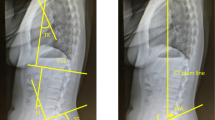Abstract
Batteries of individually standardized physical and functional tests are commonly used to assess persons with chronic back pain disability. The order of testing may affect performance on later tests. One hundred and fifty patients with>3 months of back pain disability underwent a multidisciplinary Spine Team Assessment involving Physical Therapy, Occupational Therapy, Pain Psychology, and Vocational Rehabilitation Counselor assessments at a university spine clinic. Seventeen back healthy volunteers performed the physical component of the assessment. For the volunteers the order of testing was randomized to OT tests first or PT test first, with 0.5 h rest between the tests. For patients the order of testing was arbitrarily set by an alternating schedule, with 1 h psychological testing between the two components. For both the patients and volunteers, among the 14 test components, there was no significant difference (p > 0.05) in performance with order of testing. This held true for the subgroup of patients who put out good cardiac effort. Volunteers performed better than patients on all individual tests (p < 0.001). Results suggest that the order of physical testing during a Spine Team Assessment does not affect test performance either in chronic low back disabled patients or in volunteers.
Similar content being viewed by others
REFERENCES
Tramposh AK. The functional capacity evaluation:Measuring maximal work abilities. Occup Med 1992; 7(1): 113–124.
Kraus J. The independent medical examination and the functionalcapacity evaluation. Occup Med 1997; 12(3): 525–556.
Mayer TG, Gatchel RJ, Kishino N, Keeley J, Capra P, Mayer H, Barnett J, Mooney V. Objective assessment of spine function following industrial injury. A prospective study with comparison group and one-year follow-up. Spine 1985; 10(6): 482–493.
Harten JA. Functional capacityevaluation. Occup Med 1998; 13(1): 209–212.
HartDL, Isernhagen SJ, Matheson LN. Guidelines for functional capacity evaluation of people with medical conditions. J Orthop Sports Phys Ther 1993; 18(6): 682–686.
Haig AJ, Geisser ME, Theissen M, Michel B, Yamakawa K. The Spine Team Assessment—Physical and psychosocial performance of 500 adults with chronic low back pain disability. J Occup Rehabil (manuscript submitted for pulication).
Fanuele JC, Birkmeyer NJO, Abdu WA, Tosteson TD, Weinstein JN. The impact of spinal problems on the health status of patients. Have we understimated the effect? Spine 2000; 25(12): 1509–1514.
Haig AJ, Theissen M, Geisser M, Michel B, Yamakawa K. Team decision making for Spine Team Assessment—Standardizing the multidisciplinary assessment for chronic back pain. J Occup Rehabil (manuscript submitted for pulication).
NovyDM, Simmonds MJ, Olson SL, Lee CE, Jones SC. Physical performance: Differences in men and women with and without low back pain. Arch Phys Med Rehabil 1999; 80: 195–198.
Golding LA, Myers CR, SinningWE. (ed.). The Y's way to physical fitness. Champaign, IL: Human Kinetic Publishers, 1989, pp. 88–98.
Mayer TG, Barnes D, KishinoND, Nichols G, Gatchel RJ, Mayer H, Mooney V. Progressive isoinertial lift evaluation 1. A standardized protocol and normative database. Spine 1988; 13: 993–1002. (Published erratum appears in Spine 1990; 15:5.
Chaudhuri S, Haig AJ, Buccholz R, Yamakawa K, Lamphiear R. The slowprogressive isoinertial lifting evaluation: What does it mean? Arch Phys Med Rehabil 2000; 81: 1281.
Ruan CM, Haig AJ, Geisser ME, Yamakawa K, Buchholz RL. Five functional screening tests predict poor outcomes in physical and psychosocial testing in individuals with chronic spinal pain. J Occup Rehabil 2001; 11: 119–132.
Rehabilitation TeamAssessments, LLC. 3316 The Glade, Ann Arbor, MI. (www.rehab-team.com).
Author information
Authors and Affiliations
Rights and permissions
About this article
Cite this article
Haig, A.J., Geisser, M.E., Nicholson, C. et al. The Effect of Order of Testing in Functional Performance in Persons with and Without Chronic Back Pain. J Occup Rehabil 13, 115–123 (2003). https://doi.org/10.1023/A:1022504032299
Issue Date:
DOI: https://doi.org/10.1023/A:1022504032299




